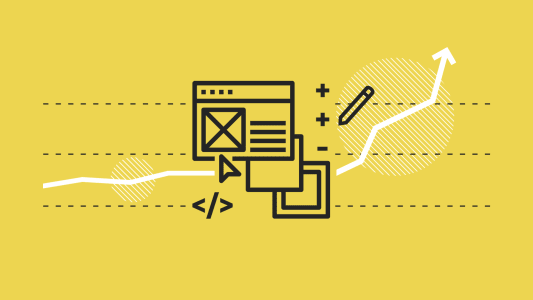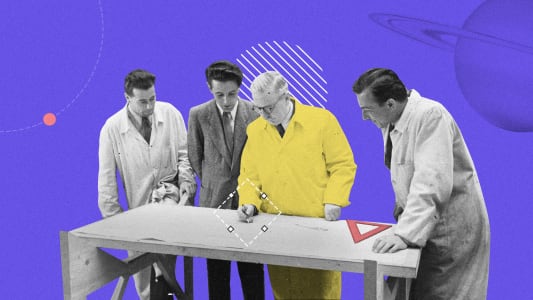Why and how UX matters for your business?
As more and more business is conducted digitally and online, user experience (UX) has become an important factor. Previously, the customer experience was face to face, with another person. Nowadays however, the customer engages with a website, a platform, an app… and their experience is entirely dependent on the design and coding of that interface. It’s never been so important for businesses to provide a smooth, problem-free transaction. In other words, UX matters.

Table of contents
A well-designed digital platform or website functions reliably, with a minimum of frustration for the user. A great user experience not only gives the user what they’re looking for, but does so in a way that they come back for more, or will recommend your business to others. As the point of interaction between your business and its customers, UX is hugely influential, affecting development costs, sales and conversion rates, customer loyalty, and ultimately, ROI. This article lays out the details of how UX design helps business and tells you what to expect in terms of a good UX service.
What is UX?
UX is the whole of the user’s engagement with your product or service. It includes how they access the product or service, how they perceive it, and how they feel about it.
Just to be clear, let’s distinguish UX from UI.
The user interface (UI) is how the product looks, including its visual design and layout, content, icons, typography, etc. The role of UI designers is to create an understandable interface that will help users to resolve their problems. The UI is the link connecting humans and the system they want to interact with. UI design works within so-called UI patterns - sets of rules, thanks to which users can recognize a button (despite the many possible shapes, colors, etc.) or know that the floppy disk icon is used to save something, and so on. If UI patterns are used properly, users can navigate the web or application even if they’re seeing it for the first time.
The UX goes much wider than the UI. UX design is all about creating meaningful experiences and the UI is included in that. UX design includes understanding the users and what they want. It includes interactive design, wireframing, and the mapping of user journeys. UX design uses frameworks like design thinking to ensure creative problem-solving and agile approaches, including the use of sprints, to ensure creation of the UX is an iterative process, focused on user needs, and constantly evolving throughout the project. Put simply, the UI is part of the UX.
Why is UX important for business? Numbers
First, let’s look at some headline research statistics around the impact and benefits a focus on UX design can have on your digital product and your business:
- Investing in UX during a project’s concept phase reduces the product development cycle by 33-50% - a focus on users and their early involvement ensures development work is on target.
- Better UX design can increase conversion rates by 400% - site visitors and ‘just-lookers’ are more likely to become customers and clients in response to enhanced UX design,
- On websites, users expect pages to load within two seconds; more than three seconds and up to 40% of users will abandon your site – for websites, loading time is a basic consideration of UX design.
- 94% of users listed design-related issues as the main reason for approving or rejecting a product.
- A focus on UX design can reduce the time needed by developers to later re-work or ‘fix’ a product by up to 50% - a tighter focus on the UX upfront means less investment in ‘corrective’ development work later on.
- Every $1 invested in UX brings an average $100 in return: an incredible ROI of 9,900%.
UX design - processes and services
When engaged in UX design work – whether starting development from scratch or looking to optimize an existing product – there are two key goals:
- Reduce the number of steps or actions a user needs to take – The shorter and more straightforward the process for the customer, the more likely they are to make a purchase / buy a ticket / register their details, etc.
- Keep it intuitive – Your product may be a new design but it should also feel familiar to the user; assuming they have some experience of other products, they should be able to intuit or make correct assumptions about yours. The whole idea is to keep frustration to a minimum.
But how to achieve these goals? UX design starts with the original business idea – the problem that the product is intended to solve for users – and then focuses on the users, keeping them (and their experience) at the center of the feature design process. A simple version of this process would be:
- What is the problem?
- Who has the problem? Who are the users?
- How can the problem be solved?
- What will that solution achieve?
- What features does the solution require?
- How will the solution (the product) function and what will it look like?
UX design consists of four basic elements:
- UX research - data-gathering relating to the problem and users;
- user interface - designing the look and feel of the UI;
- content strategy - the approach to producing the text, images, articles, blog posts and other content for your product;
- UX writing - the so-called ‘microcopy’, the small pieces of text that guide the user from one page or step to another; including calls to action, user instructions, error messages, etc.
But if those are the four basic categories of UX work, what kind of services or tasks should you expect to undertake or commission?
- User testing – Usually carried out at the beginning or early in the design process, user testing enables you to confirm the business idea behind the product, test likely reactions to specific design features and generally guide the project in a user-centered way. User testing can include A/B tests, focus groups, in-depth interviews, usability tests, and the use of moodboards to gather feedback on product visuals.
- Product discovery workshops – Taking place at the beginning of the project, a product discovery workshop includes the development team and product owner, seeking to establish a product vision and direction for design and development. The product vision and value proposition for users go on to inform the UX design.
- User story mapping – User stories are a way of describing the product in terms of how it will be used; the user’s ‘journey’ through the product’s functionality. During the design process, user stories are a way of describing the UX in order to better define the product.
- Wireframes – A wireframe is a visual representation of a website’s structure, used to test the structural functionality with users.
- Prototypes – Producing a stripped-down version of the product or a feature for testing with users maintains the user-centered focus throughout product development.
Prior to these UX activities, another option is the UX audit, often carried out alongside a code audit. Before creation and design begins, a UX audit can be used to check out the design aspects of a current or partially-developed product, ensuring that they are in line with the identified business goals and user requirements, also covering issues such as software architecture, accessibility, maintenance issues, and security.
How does UX influence your product and your business?
UX design work can be time-consuming and definitely makes a software development project more complicated. However, you’re also far more likely to end up with an app, website, or platform that is attractive to customers, creates loyalty, and encourages repeat business. Here are some of the key impacts and benefits of focusing on UX design as part of your digital product development.
- Reduces costs – UX design puts the user at the heart of the design process, ensuring that a) the final product will appeal to users more, and b) there are fewer fixes or changes to make later. In other words, you’re avoiding problems (and expenses) from the start because design changes are easier and cheaper than post-development changes.
- Sales and conversions – Good UX is about providing the service or fulfilling the function as efficiently as possible. As we saw in the statistics, poor UX means a higher abandonment rate. But by keeping the UX intuitive and minimizing the number of steps a user has to take, customers are much more likely to stay the distance and make a purchase.
- Improved SEO ranking – Google’s search algorithm is constantly evolving. These days, it also factors in ‘dwell time’, the amount of time each visitor spends on a webpage. The longer the dwell time, the higher the page ranking. As with the sales and conversions, good UX encourages users to stick around on your site.
Other potential benefits of a focus on UX design include improved word-of-mouth referrals (beginning early when you involve users in the design and development process), better ROI, reduced time to market, and less customer support calls or messages once the product is in use.
When should you focus on UX?
What kind of product or stage of development benefits most from UX improvements? Well, the obvious answer is all of them but in particular, we can highlight:
- Prototyping – a focus on the UX aspects of a prototype will give you valuable feedback on the market, users, and stakeholders.
- MVPs (minimum viable products) – similar to prototyping but the UX of an MVP can validate (or not) the business idea or hypothesis behind the product.
- Product-market fit – this stage of development relies on a detailed understanding of the product’s target users.
- Scaling – when developing a product version for new or expanded markets, a UX focus is essential; after all, the users in those new markets may have different requirements.
UX design is central to successful development
Ultimately, the success of any platform, website, or app depends on how it is received by users; does it meet their needs, and solve their problems? The goal of UX design is to create an efficient and meaningful experience for users. By adopting a UX focus in your product design and development process, the result is a product that is not only functional but is also useful, practical, and even rewarding to use. At Boldare, we are firm believers in the benefits of UX design. In fact, we’d bet that a great UX is at the heart of every market-leading digital product.
Share this article:











